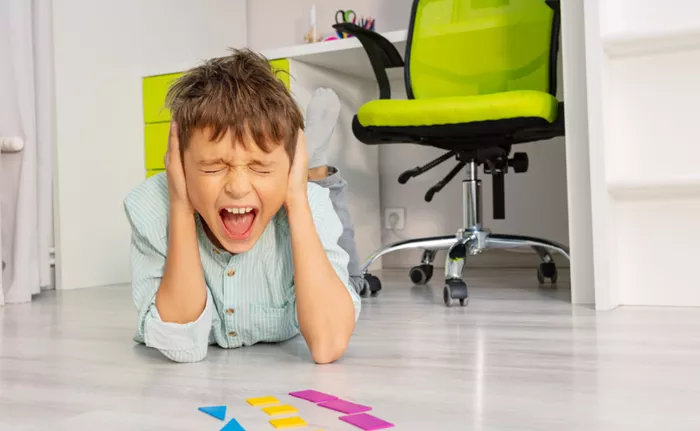At the University of Delaware’s STAR Campus, Dr. Anjana Bhat’s colorful Move 2 Learn Innovation Lab is filled with laughter and motion. Children jump, dance, and play musical instruments — and while it may look like simple fun, a groundbreaking study shows it’s actually helping their brains work better.
Dr. Bhat, a physical therapy professor, has been studying how movement affects thinking in children with autism. Her research shows that active play can lead to better cognitive functioning, especially in areas like decision-making and planning.
Two Types of Play, One Clear Winner
In the study, children with autism between the ages of 5 and 15 were split into two groups. One group did full-body activities like jumping, dancing, and obstacle courses. The other group stayed seated and did calm activities like reading, crafts, and building with blocks.
The results were striking: only the children who moved saw real improvements in their executive functioning — the mental skills we use to make decisions, plan ahead, and complete tasks.
“These are the skills we need in daily life,” Dr. Bhat explained. “When children move their bodies in these activities, they have to think ahead and make quick choices. That’s what helps their brains grow stronger.”
Music, Movement, and Thinking Ahead
Some of the movement activities included music. Children would play drums, ring bells, or dance with an adult. Sometimes, they had to match their movements to music or copy someone who moved fast or slow.
Even though the exercises were playful, they were carefully designed to challenge the brain. Choosing how to move, when to jump, or how to respond to music required children to think on their feet.
“There’s a lot of decision-making involved,” Bhat said. “That’s the kind of thinking that builds stronger brain connections.”
Why the Brain Loves Exercise
Bhat’s research, published in the journal Disability and Rehabilitation, also showed that physical activity helps bring more blood to the brain’s prefrontal cortex — the area responsible for planning and focus.
“This could be one reason why exercise helps with thinking,” Bhat said.
The children in the seated play group didn’t show any improvement in thinking skills, suggesting that movement is the key factor.
Movement Works — Even Over Zoom
The study took place between 2020 and 2022. Because of the pandemic, some sessions happened online through telehealth, while others were done in person. Surprisingly, both groups of children benefited equally.
“Positive outcomes were seen across both settings,” Bhat said. “That tells us the program works whether it’s delivered online or face-to-face.”
What This Means for Schools and Therapy
Dr. Bhat wants to take this research further by doing a larger study with brain imaging. She hopes the findings will help schools and therapists rethink how they support children with autism.
Right now, most therapy for children with autism focuses on fine motor skills — like writing or buttoning a shirt — and emotional regulation. But Bhat believes gross motor skills, like running and jumping, are just as important and often ignored.
“Physical therapists rarely get referrals for children with autism,” she said. “But many of these kids have serious motor challenges that go untreated.”
Real-Life Results
Kamryn Lombardi, a pediatric occupational therapist who worked in Bhat’s lab, now includes movement in her therapy sessions. She says it helps children stay engaged and focused.
“Even short movement breaks during fine motor work improve attention and help kids reach their goals,” she said.
Parents are also seeing results. Fei Shan, whose two sons with autism participated in the study, said the changes have been dramatic.
“We hike, swim, and do Taekwondo,” she said. “Even 20 minutes a day makes a huge difference. They’re more focused and better able to complete their tasks.”
Bhat’s Call for More Movement in Schools
Dr. Bhat believes schools need to do more to keep kids moving, especially as they get older and physical education time is reduced.
“After exercise, kids are more focused and ready to learn,” she said. “We’re not doing enough of it, especially in middle schools where recess and PE often get cut.”
Although more research is needed to confirm if these cognitive benefits carry over into everyday life, the early findings are promising. Movement, it turns out, may be one of the most powerful tools for helping children with autism succeed.
Related topics:
- What Is Autism: Symptoms, Diagnosed & Treated
- Is Autism Related To ADHD: All You Need To Know
- The Intersection of Autism and Depression


